Evolvulus arizonicus, Arizona Blue-eyes
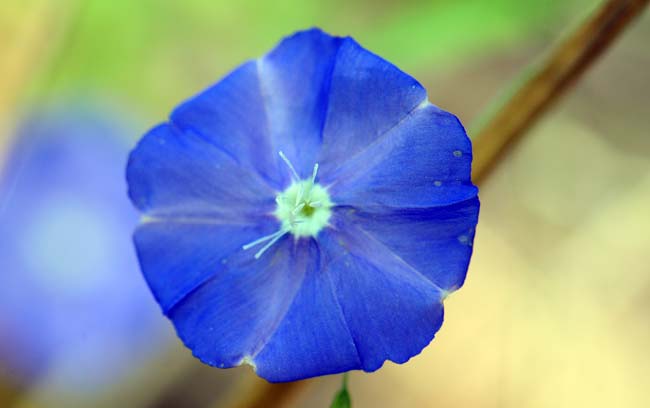
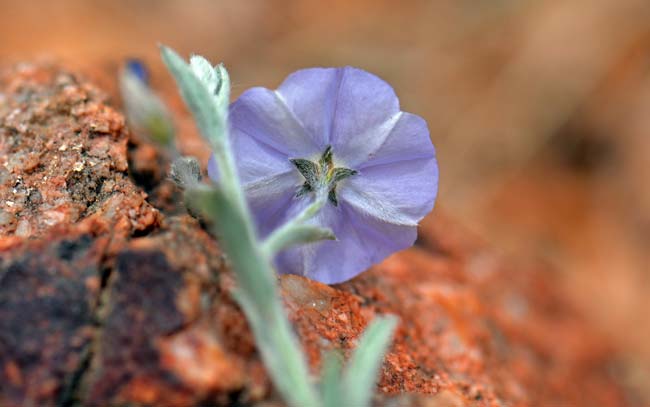
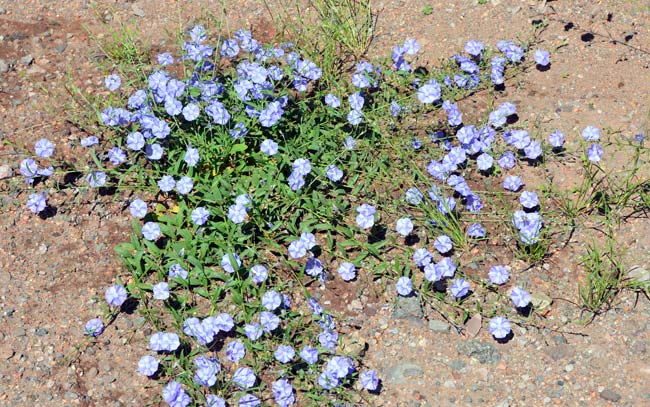
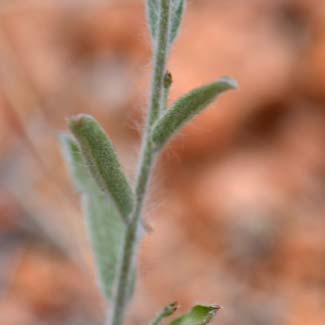
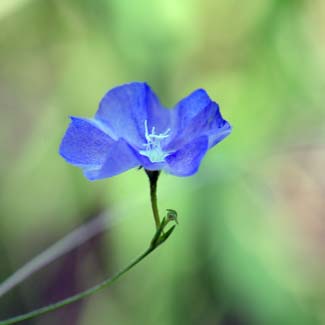
Scientific Name: Evolvulus arizonicus
Common Name: Arizona Blue-eyes
Also Called: Hairy Evolvulous, Wild Dwarf Morningglory, Wild Dwarf Morning-glory; (Spanish: Oreja de Ratón)
Family: Convolvulaceae, Morning Glory Family
Synonyms: (Evolvulus arizonicus var. laetus, Evolvulus laetus)
Status: Native
Duration: Perennial
Size: Up to 1 foot and 2 feet wide.
Growth Form: Forb/herb; woody base, bushy plant, green or grayish-green, typically with numerous slender stems, plants erect or ascending, noticeable pubescence of gray or silvery hairs, slightly tomentose.
Leaves: Green or grayish-green, narrow or narrowly lanceolate, sessile or with short petioles.
Flower Color: Sky-blue or bluish-purple, showy about ¾ inch, corolla with small white center ring; flowers on short pedicels in slender stem axils, corolla flattened, fruit is a globose capsule.
Flowering Season: April to October.
Elevation: 3,000 to 6,000 feet.
Habitat Preferences: Mid to upper Sonoran desert elevations on rocky sites and disturbed areas.
Recorded Range: Evolvulus arizonicus is rare in the United States with populations in Arizona and New Mexico. It is also native to northern and southern Mexico. In Arizona it is primarily in the central and southeast parts of the state.
North America & US County Distribution Map for Evolvulus arizonicus.
U.S. Weed Information: No information available.
Invasive/Noxious Weed Information: No information available.
Wetland Indicator: No information available.
Threatened/Endangered Information: No information available.
Comments: Arizona Blue-eyes is a beautiful Arizona native wildflower found in mid- to upper-elevations that attracts insects and birds. The type specimen is from Sonora, Mexico near the Arizona border.
Arizona Blue-eyes is one of four species of Evolvulus in Arizona. Also see Evolvulus sericeus, Silver Dwarf Morning-glory.
Although hard to find in nurseries it make a beautiful landscape specimen. Tohono Chul Park in Tucson, Arizona offers it periodically.

